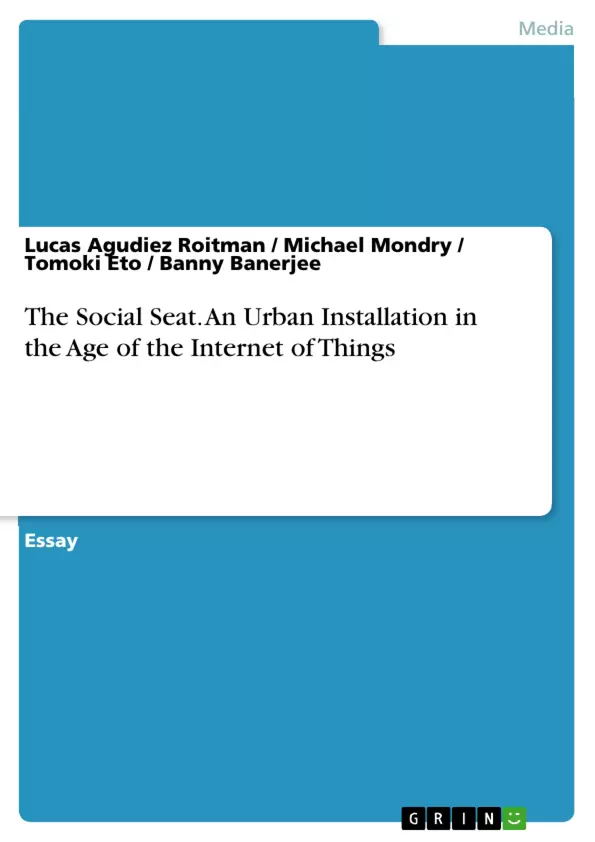People share spaces such as cafes, airports, libraries, and classrooms for hours everyday. Often times, these people sitting right next to each other never even think to interact. They almost always have shared interests, some common ground on which they could interact. The Social Seat helps people converse and connect in a easy, interactive, and playful way using a physical chair that indicates one's willingness to talk, and common topics. This paper will discuss how the concept came to fruition and how we researched the market to find consumer preferences and needs.
Inhaltsverzeichnis (Table of Contents)
- Abstract
- Research Method
- Social Seating and its current applications
- Concept Description
- Implications and Considerations
- Conclusions
Zielsetzung und Themenschwerpunkte (Objectives and Key Themes)
This paper explores the concept of the Social Seat, an interactive chair and social networking system designed to facilitate natural and non-invasive connections between individuals with shared interests. It delves into the research process that led to the development of the Social Seat, including ethnographic interviews and an analysis of existing social seating applications.
- The need for natural and non-invasive ways for people to meet and connect with others who share similar interests.
- The potential for social seating to create meaningful relationships and foster community building.
- The implications of privacy and data security in the context of social networking platforms.
- The challenges of portability and user adoption of social seating technologies.
- The need for further research to assess the long-term impact of the Social Seat on user interactions and relationship building.
Zusammenfassung der Kapitel (Chapter Summaries)
- Abstract: Introduces the Social Seat as a physical chair that facilitates interactions between people with shared interests through a unique color code system and a corresponding app. The paper outlines the research process and the motivation behind the Social Seat.
- Research Method: Describes the ethnographic research conducted with university students to understand their social interactions, including their reliance on social media, preferences for meeting new people, and the conditions necessary for comfortable social interaction.
- Social Seating and its current applications: Explores the concept of social seating in various fields, such as education, town planning, and airlines, highlighting the potential benefits and current implementations. It also discusses the mixed success of existing social seating platforms and their limitations.
- Concept Description: Explains the design and functionality of the Social Seat, emphasizing its interactive nature, color-based identification system, and integration with a mobile app for connecting with other users.
- Implications and Considerations: Examines the potential implications of the Social Seat, including business security, privacy risks, portability issues, and the challenge of creating meaningful relationships through the platform.
Schlüsselwörter (Keywords)
The key themes and concepts explored in this paper revolve around social interaction, design innovation, and the impact of technology on human relationships. The Social Seat is presented as a potential solution to address the need for natural and non-invasive ways for people to connect with others who share common interests. Key terms include: Social Seat, social networking, interactive design, user experience, privacy, data security, portability, meaningful relationships, and social seating.
- Quote paper
- Lucas Agudiez Roitman (Author), Michael Mondry (Author), Tomoki Eto (Author), Banny Banerjee (Author), 2013, The Social Seat. An Urban Installation in the Age of the Internet of Things, Munich, GRIN Verlag, https://www.grin.com/document/355009



